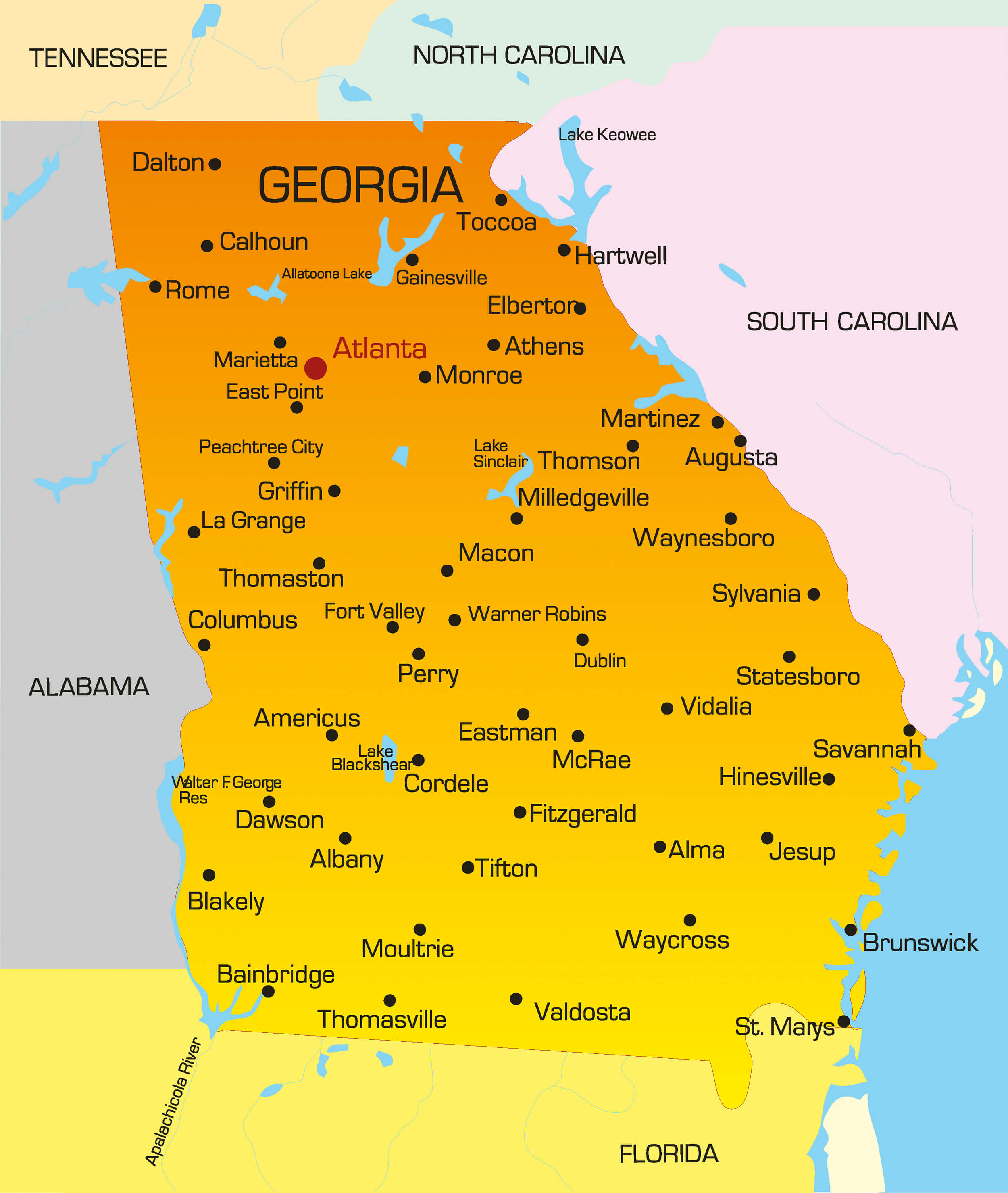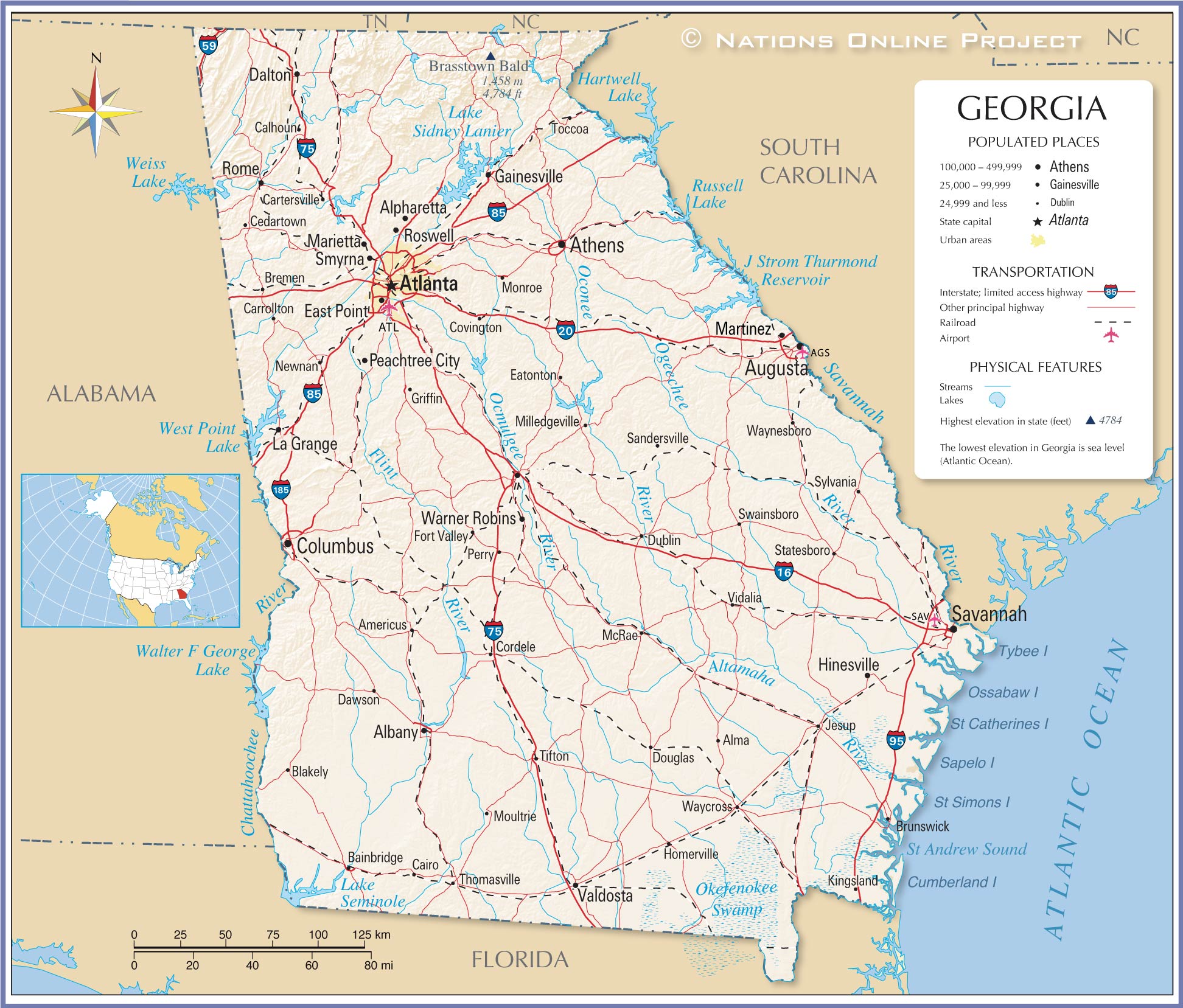
>
Decoding the Ancient Landscape: A Historical Map of Georgia’s Native American Tribes
A historical map of Georgia’s Native American tribes is more than just lines and names; it’s a living narrative, a vibrant tapestry woven with the threads of millennia of human endeavor, cultural innovation, and profound resilience. For anyone captivated by history, cultural identity, or the sheer beauty of Georgia’s diverse landscapes, understanding this map is to unlock a deeper appreciation for the land beneath our feet. This article delves into the rich history and enduring identity of the Indigenous peoples who shaped Georgia, guiding you through the layers of time revealed by these powerful cartographic documents.
The Land Before Columbus: A Millennia of Civilizations

Before European contact fundamentally altered the continent, Georgia was a dynamic hub of sophisticated Native American cultures, many of whom had thrived for thousands of years. Early historical maps, often reconstructions based on archaeological evidence and oral traditions, hint at the immense complexity of these societies.
The Mound Builders and Mississippian Culture: The most prominent evidence of Georgia’s ancient inhabitants are the majestic earthen mounds scattered across the state. These weren’t mere burial sites but ceremonial centers, residential platforms, and expressions of a complex, stratified society known as the Mississippian Culture, flourishing from approximately 800 to 1600 CE.
- Etowah Mounds (Cartersville): One of the largest and most intact Mississippian sites in the Southeast, Etowah was a major political and religious center. Its massive platform mounds, defensive ditch, and village area would have dominated the landscape, home to thousands. The artifacts unearthed here, including intricately carved shell gorgets and stone effigies, speak to a vibrant artistic and spiritual life, and extensive trade networks that connected them to distant regions.
- Ocmulgee Mounds (Macon): Another significant Mississippian site, Ocmulgee offers a unique glimpse into this culture with its "Earth Lodge," featuring a preserved circular floor and ceremonial seating. Ocmulgee’s strategic location on the Ocmulgee River made it a critical trading hub, and its mounds represent a continuous occupation stretching back to the Paleo-Indian period.
- Kolomoki Mounds (Blakely): Further south, Kolomoki Mounds State Historic Park showcases an even older tradition, with mounds dating back to the Swift Creek and Weeden Island cultures (350-750 CE), demonstrating the long lineage of mound-building traditions in Georgia.

These early maps, though abstract, underscore that the land was not "wilderness" but a meticulously managed and culturally rich landscape, crisscrossed by trade routes and dotted with thriving communities long before the arrival of Europeans. The identities of these specific "Mound Builder" groups are often precursors to, or absorbed into, the later historical tribes we recognize.

The Major Players: Tribes on the Map at European Contact
By the time Europeans began to sketch their crude maps of the "New World," Georgia was largely home to two dominant cultural and linguistic groups: the Muscogee (Creek) and the Cherokee, alongside several smaller, regionally significant tribes.
The Muscogee (Creek) Confederacy: Occupying the vast central and southern portions of Georgia, extending into Alabama and Florida, the Muscogee (or Creek) people were not a single tribe but a powerful confederacy of diverse towns, united by a common language (Muskogean) and cultural practices.
- Identity and Structure: The Muscogee were renowned for their sophisticated political structure, centered around autonomous town units, each with its own chief (mico), council, and ceremonial square grounds. These towns were often categorized as "White Towns" (associated with peace) or "Red Towns" (associated with war), forming a balanced and dynamic system. Their identity was deeply tied to their land, their agricultural practices (corn, beans, squash), and their elaborate ceremonial calendar, including the annual Green Corn Ceremony (Busk).
- Geographic Distribution: A historical map would show Muscogee towns strategically located along major river systems like the Ocmulgee, Oconee, Chattahoochee, and Flint rivers. Key towns often appearing on these maps include Coweta, Cusseta, Kasita, and Tukabatchee, forming a powerful buffer against European encroachment for a time. Their presence was especially strong in what is now the Piedmont and Coastal Plain regions.

The Cherokee Nation: Dominating the mountainous northern reaches of Georgia, extending into Tennessee, North Carolina, and Alabama, the Cherokee people represented another distinct and powerful cultural force.
- Identity and Structure: The Cherokee, speaking an Iroquoian language, were a highly organized society with sophisticated legal and political systems. Their towns were often larger than Muscogee towns, and they were known for their adaptability and resilience. Their identity was deeply rooted in the Appalachian landscape, their hunting traditions, and their spiritual connection to the mountains.
- Geographic Distribution: Maps would depict Cherokee towns in the valleys and foothills of the Blue Ridge Mountains. Significant towns in Georgia included New Echota (their capital, a symbol of their advanced governance and later tragedy), Etowah (distinct from the ancient mounds), and settlements around present-day Dahlonega.
Coastal Tribes: Guale and Yamasee: Along Georgia’s barrier islands and coastline, smaller but significant groups like the Guale and Yamasee made their homes.
- Identity and Early Contact: The Guale, an independent Muskogean-speaking group, were among the first Indigenous peoples in Georgia to encounter Europeans, specifically the Spanish. Their identity was intrinsically linked to the coastal environment, relying on marine resources and cultivating crops adapted to the sandy soil. The Yamasee, a confederation of various peoples, migrated into the area and also had significant interactions with both Spanish and later, British colonists.
- Geographic Distribution: These tribes would be depicted along the Atlantic coast, particularly around St. Catherines Island, Sapelo Island, and the mouth of the Savannah River. Their history is one of intense conflict and cultural absorption due to early European colonization efforts, leading to their eventual displacement or merging with other groups.
European Arrival and the Shifting Cartography of Power
The arrival of Europeans—first the Spanish in the 16th century, then the British in the 17th and 18th centuries—marked a dramatic turning point. Maps from this era begin to tell a story of escalating conflict, disease, and the relentless pressure for land.
- Spanish Missions: Early Spanish maps illustrate their attempts to establish a foothold along the coast, with dotted lines marking their mission systems (e.g., Mission Santa Catalina de Guale). These missions, while aiming to convert Native populations, also served as tools of control and resource extraction, leading to Native resistance and the decimation of coastal tribes by disease and warfare.
- British Trade and Colonial Expansion: With the founding of Georgia by James Oglethorpe in 1733, British maps began to delineate colonial boundaries, often overlapping or completely disregarding existing Native territories. The British engaged in extensive trade with the Muscogee and Cherokee, exchanging European goods (guns, tools, cloth) for deerskins. This trade, while initially beneficial, fundamentally altered Native economies and social structures, fostering dependency and inter-tribal conflicts. Maps from this period show "Indian Paths" evolving into colonial roads, foreshadowing the shrinking of Native lands.
- The Crucible of Conflict: The American Revolution and subsequent post-colonial era saw Native tribes caught between warring European powers and the newly formed United States. Maps of this period reflect strategic alliances and territorial cessions, often under duress. The Muscogee, for instance, were divided in their loyalties, leading to internal strife and further land losses.
The American Era: Gold, Greed, and the Trail of Tears
The early 19th century brought the most devastating chapter for Georgia’s Native Americans. As the United States expanded westward, the desire for land, especially after the discovery of gold near Dahlonega in Cherokee territory in 1828, intensified.
- The Indian Removal Act: Maps from this period vividly illustrate the shrinking boundaries of Native lands. Despite adopting written constitutions (like the Cherokee Nation’s in 1827), developing a written language (Sequoyah’s syllabary), and establishing advanced farming practices, the Cherokee and Muscogee faced insurmountable pressure. The Indian Removal Act of 1830, championed by President Andrew Jackson, formalized the policy of forced relocation.
- The Treaty of New Echota (1835): This controversial treaty, signed by a small, unauthorized faction of the Cherokee Nation, ceded all Cherokee lands in Georgia and the Southeast in exchange for lands in Indian Territory (present-day Oklahoma). The vast majority of the Cherokee Nation vehemently opposed it, but the U.S. government used it as justification for removal. Maps of the mid-1830s show the final, stark delineation of "Indian Territory" far to the west, with Georgia’s map now depicted as solely U.S. property.
- The Trail of Tears (1838-1839): The culmination of this policy was the forced removal of thousands of Cherokee, Muscogee, Choctaw, Chickasaw, and Seminole peoples from their ancestral homelands to Indian Territory. The "Trail of Tears" was a brutal forced march where thousands died from disease, starvation, and exposure. A historical map charting the routes of this removal is a poignant and stark reminder of one of the darkest chapters in American history. It shows the forced exodus from Georgia, leaving behind millennia of cultural heritage.
Beyond the Map: Legacy and Modern Identity
While the historical maps often end with the removal of Native tribes from Georgia, their story does not. The maps, though showing an absence, ironically underscore an enduring presence and identity.
- Resilience and Survival: The descendants of Georgia’s Native American tribes, though largely living in Oklahoma and other states, have maintained their distinct cultural identities, languages, and traditions. Federally recognized tribes like the Muscogee (Creek) Nation of Oklahoma, the Cherokee Nation, the United Keetoowah Band of Cherokee Indians, and the Eastern Band of Cherokee Indians (who resisted removal and remained in North Carolina) are vibrant, self-governing nations today.
- Reclaiming the Narrative: In Georgia, sites like the Etowah Mounds and Ocmulgee Mounds serve as powerful reminders of the Indigenous civilizations that thrived here. Modern educational initiatives and partnerships between state parks and tribal nations are working to ensure that the Native American perspective is accurately and respectfully presented. Museums across Georgia, such as the Native American collection at the Funk Heritage Center in Waleska, also play a vital role in preserving and sharing this history.
- Enduring Connection: For many Native Americans whose ancestors walked this land, Georgia remains their spiritual homeland. The rivers, mountains, and forests hold deep significance, even across the miles. Understanding the historical map helps us acknowledge this enduring connection and the immense cultural loss that occurred.
Conclusion: A Map as a Call to Remembrance
A historical map of Georgia’s Native American tribes is more than just a cartographic artifact; it’s a profound educational tool. It challenges us to look beyond the surface of the modern landscape and recognize the deep layers of history beneath. It tells a story of innovation, community, and sophisticated governance that flourished for millennia. It also recounts a tragic tale of displacement, broken treaties, and forced removal.
For the traveler and history enthusiast, this map is an invitation to explore Georgia with new eyes: to visit the ancient mound sites, to walk the lands where vibrant communities once thrived, and to remember the peoples whose identities are inextricably linked to this beautiful and complex state. By understanding this map, we honor their legacy, acknowledge their resilience, and commit to a more inclusive understanding of Georgia’s rich and multifaceted past. The story of Georgia’s Native American tribes is not over; it continues to unfold, woven into the very fabric of the land.
